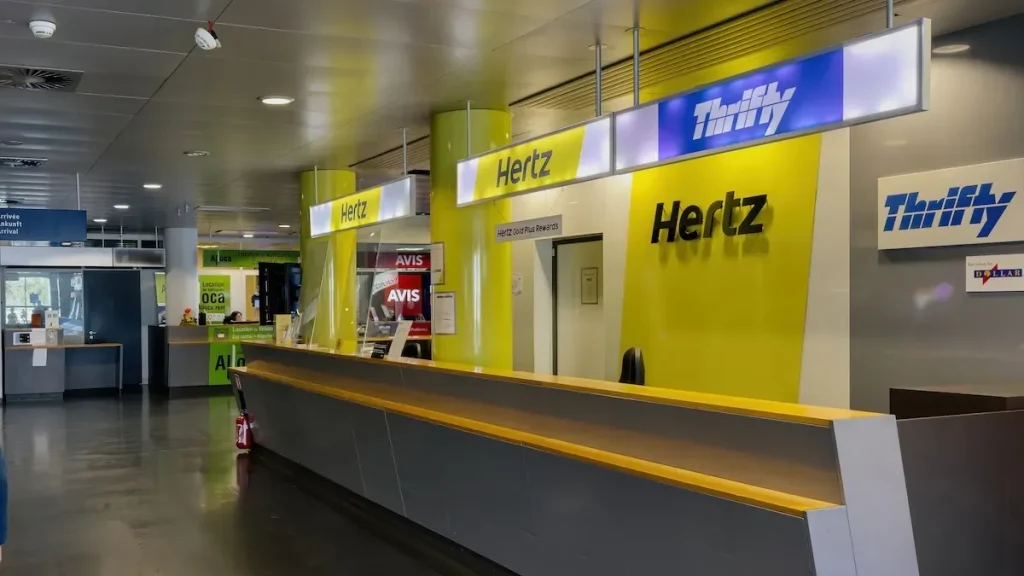The Hertz data breach has unveiled a serious vulnerability in the rental industry’s approach to customer information safety, as millions of consumers were potentially affected by this alarming incident. In 2024, hackers exploited secure connections through a software vendor, putting sensitive details at risk, including driver’s license numbers and social security information. As identity theft protection becomes a pressing concern, this breach underscores the critical need for enhanced cybersecurity measures across all sectors. Companies must remain vigilant, as the consequences of a data breach can extend far beyond immediate financial impacts to long-term trust erosion with customers. Understanding the dynamics of data breach response is essential for organizations to safeguard against future attacks, especially those orchestrated by sophisticated groups like the Clop ransomware gang.
In recent times, the rental car industry faced a significant challenge with the Hertz incident, which highlights the importance of comprehensive strategies for protecting personal data. This event serves as a stark reminder of the potential risks when operational processes involve third-party software solutions. With more organizations intertwining their operations with external vendors, the urgency for robust cybersecurity practices has never been greater. As the threat of identity theft looms large due to compromised personal details, customers must stay informed about how to protect themselves against these risks. The implications of such a data breach emphasize the necessity for effective incident management and data protection strategies that can mitigate the repercussions of unauthorized access.
Understanding the Hertz Data Breach Incident
The Hertz data breach serves as a critical reminder of the vulnerabilities in our digital ecosystems. The incident occurred as a result of a cyberattack on a third-party vendor, Cleo, which handled sensitive information for Hertz. Despite not compromising Hertz’s internal systems directly, the breach exposed an alarming amount of personal information, including names, driver’s license numbers, and potentially Social Security numbers. This incident highlights the importance of strong vendor management practices in safeguarding customer data.
Since the Clop ransomware group exploited zero-day vulnerabilities within Cleo’s software, it is evident that even established organizations like Hertz can fall victim to sophisticated cyber threats. The scale of this breach—impacting thousands of customers across multiple regions—underscores a critical point: businesses must prioritize cybersecurity not just for their systems but also for the software and vendors they choose to partner with.
The Importance of Personal Information Safety after a Data Breach
Following the Hertz data breach, customers must be proactive about protecting their personal information. The risk of identity theft escalates significantly when sensitive data is exposed, especially when it includes driver’s license details and Social Security numbers. Individuals should remain vigilant, keeping an eye out for unusual account activities and monitoring personal finances closely. Taking these safety measures is essential to mitigate the threat posed by cybercriminals.
Understanding how your information can be misused is key. Attackers often leverage exposed personal data to commit fraud or identity theft, creating a sense of urgency for affected individuals to take action. This may involve setting up fraud alerts, monitoring credit reports, or utilizing comprehensive identity theft protection services to safeguard against future threats.
Effective Data Breach Response Strategies
In the wake of the Hertz data breach, businesses must develop robust data breach response strategies. These strategies should encompass immediate containment measures, damage assessment, and communication protocols. Companies should have a clear plan for notifying affected customers and regulatory bodies, as well as providing support services such as credit monitoring to help mitigate potential fallout.
Furthermore, organizations must regularly test their data breach response plans, incorporating lessons learned from incidents like the one at Hertz. This proactive approach ensures that they are prepared to handle breaches promptly and efficiently, minimizing customer impact and maintaining trust.
What You Need to Know about Identity Theft Protection
Identity theft protection services are becoming indispensable in today’s digital landscape. In light of the Hertz data breach, customers are encouraged to utilize such services that monitor the use of their personal information across various platforms. Comprehensive identity theft protection can significantly reduce the risk of unauthorized access to sensitive accounts, while also offering recovery services in the event of fraud.
These services typically provide features such as identity monitoring, fraudulent transaction alerts, and assistance in freezing accounts when necessary. By actively engaging with these tools, individuals can enhance their personal information safety and maintain control over their digital identity following data breaches.
The Role of Cybersecurity in Preventing Future Breaches
Cybersecurity plays a pivotal role in preventing data breaches like the one faced by Hertz. Organizations must invest in robust cybersecurity infrastructure that protects not only their server environments but also their vendor partnerships. This includes conducting regular security audits, employing encryption, and ensuring compliance with industry standards to thwart potential attacks.
Additionally, employee training on cybersecurity best practices is essential. Educating staff about the potential threats posed by cybercriminals and promoting a culture of security awareness can serve as a crucial line of defense against data breaches. By fostering an environment where cybersecurity is prioritized, companies can effectively reduce their exposure to such risks.
Understanding Clop Ransomware and its Implications
The Clop ransomware gang’s involvement in the Hertz breach highlights the growing complexities of cybersecurity threats. As one of the most notorious hacking groups, Clop has targeted numerous organizations by exploiting vulnerabilities in third-party software, showcasing a strategic approach that capitalizes on supply chain weaknesses. By understanding the tactics employed by groups like Clop, businesses can better prepare themselves against evolving cybersecurity threats.
Recognizing the characteristics of ransomware attacks, such as the use of zero-day vulnerabilities, is crucial for companies to adapt their cybersecurity strategies effectively. Firms must implement rigorous monitoring and detection systems to identify and respond to potential breaches quickly, minimizing the impact on their operations and customer trust.
Monitoring and Managing Your Credit Reports Effectively
Regularly monitoring your credit reports is a fundamental step in protecting your financial health, especially after incidents like the Hertz data breach. By checking your reports from the major credit bureaus, you can stay informed about any unauthorized activities or inaccuracies that may arise due to a breach of your personal information. This proactive approach can help mitigate identity theft and fraud risks.
It’s also essential to understand how credit monitoring works and the different services available. Many financial institutions offer free access to credit reports, allowing consumers to monitor changes in credit scores and new account openings. In the aftermath of a data breach, consumers should take advantage of these resources to safeguard their financial interests.
Practical Steps to Safeguard Your Personal Information
Following a data breach like Hertz’s, there are several practical steps individuals can take to safeguard their personal information. First and foremost, setting up strong, unique passwords for online accounts is essential. Utilizing a password manager can help create complex passwords that are difficult for cybercriminals to guess.
Additionally, utilizing privacy settings on social media platforms and being cautious about sharing personal information online can significantly reduce exposure to potential threats. Individuals should also consider using multi-factor authentication for sensitive accounts to add an extra layer of security against unauthorized access.
The Importance of Vendor Management in Cybersecurity
Effective vendor management is pivotal in enhancing an organization’s cybersecurity posture. The Hertz data breach serves as a case study on how vulnerabilities in third-party software can lead to significant data loss. Organizations must rigorously evaluate their vendors’ security policies and practices, ensuring they align with their own stringent cybersecurity standards.
Creating a culture of transparency and ongoing communication concerning cybersecurity protocols between vendors and businesses is critical. Regular assessments and audits of vendor practices can help identify potential weaknesses before they are exploited, protecting customer data and maintaining trust.
Long-term Implications of Data Breaches for Consumers
The long-term implications of data breaches such as the Hertz incident go beyond immediate identity theft risks. Affected individuals may face ongoing challenges, including damage to their credit ratings and the potential for increased fraud attempts in the future. Understanding these lasting effects can help consumers remain vigilant well after the initial breach notification.
Moreover, data breaches shape consumer behavior and trust in brands. Companies that suffer data breaches must take concrete steps to rebuild consumer confidence. This may include enhancing transparency about how customer data is handled and implementing effective security measures to prevent future incidents.
Frequently Asked Questions
What are the implications of the Hertz Data Breach for customers?
The Hertz Data Breach exposed sensitive personal information, including names, driver’s license numbers, and Social Security numbers, making customers vulnerable to identity theft and fraud. Affected individuals should be vigilant about monitoring their accounts and considering identity theft protection.
How can customers protect their personal information after the Hertz Data Breach?
Customers can protect their personal information by setting up fraud alerts, monitoring credit reports, changing passwords regularly, and using identity theft protection services to safeguard against potential misuse of their data following the Hertz Data Breach.
What type of data was compromised in the Hertz Data Breach?
The Hertz Data Breach involved sensitive personal information shared with a third-party vendor, including names, contact details, driver’s license numbers, and payment card information, putting customers at risk for identity theft.
What caused the Hertz Data Breach and how did it happen?
The Hertz Data Breach was caused by a cyberattack on Cleo, a software vendor used by Hertz, exploiting vulnerabilities in their platform. The Clop ransomware gang was responsible for this breach, which highlighted the importance of cybersecurity among third-party vendors.
What steps should customers take if they suspect their data was involved in the Hertz Data Breach?
Customers should immediately activate fraud alerts with credit bureaus, monitor their credit reports, change passwords for affected accounts, and consider using personal data removal services to scrub their information from public databases.
Can identity theft protection help after the Hertz Data Breach?
Yes, identity theft protection can be invaluable following the Hertz Data Breach, as it assists individuals in monitoring their accounts for signs of unauthorized activity, helps in freezing credit if necessary, and provides resources to recover from identity theft.
What should customers know about the Clop ransomware gang in relation to the Hertz Data Breach?
The Clop ransomware gang is believed to have exploited a zero-day vulnerability in Cleo’s software, leading to the Hertz Data Breach. Understanding their tactics is crucial for customers looking to protect their personal information and recognize potential scams.
How can companies prevent breaches like the Hertz Data Breach in the future?
To prevent breaches like the Hertz Data Breach, companies must enhance their cybersecurity measures, regularly vet and monitor third-party vendors, and implement robust data protection strategies that address vulnerabilities in the digital supply chain.
| Key Points | Details |
|---|---|
| Incident Description | The Hertz data breach was triggered by a cyberattack on one of its software vendors, Cleo, compromising customer data. |
| Data Compromised | Exposed data includes names, dates of birth, driver’s license numbers, Social Security numbers, and financial details. |
| Affected Regions | Customers in the U.S., Australia, Canada, EU, New Zealand, and the UK were notified about the breach. |
| Vulnerability Exploited | The breach exploited a zero-day vulnerability in Cleo’s enterprise file transfer software used by many organizations. |
| Recommendations for Customers | Customers are advised to monitor credit reports, set up fraud alerts, and be wary of phishing attempts and identity theft tactics. |
Summary
The Hertz Data Breach has raised significant concerns about the security of personal information held by companies. This incident highlights the vulnerability of customer data stored with third-party vendors and the potential risks associated with such exposure. As customers, it is crucial to remain vigilant and proactive in protecting your personal information to mitigate the risk of identity theft and fraud.

